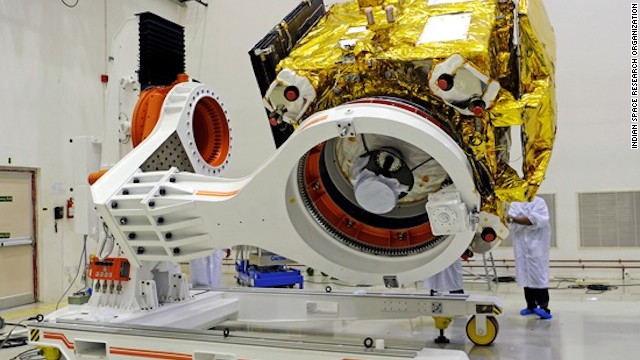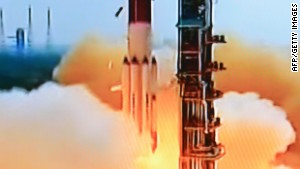Five things to know about India's Mars orbiter
The United States couldn't do it on its first try. Neither could the Soviets.
 Photos: India's first Mars orbiter
Photos: India's first Mars orbiter


In true underdog fashion,
India launched its ultra-budget spacecraft and bested the Americans and
Europeans by becoming the first nation to succeed in sending a
spacecraft into Mars' orbit on its initial attempt.
Twenty-four hours into
India's entry into the elite space club, the Mars Orbiter Mission, also
known as Mangalyaan, is circling the Red Planet and sending back data
and photos to the command center.
Here are five things to know about the latest Mars darling:
 Photos: India's first Mars orbiter
Photos: India's first Mars orbiter

India launches mission to Mars

Open Mic: India's Mars mission
1. How India kept its Mars mission costs low
The much-repeated phrase
is that the Mars Orbiter Mission at $74 million cost less than the $100
million budget for the Hollywood space thriller "Gravity."
At least "Gravity" earned a few Academy Awards.
India's Mars mission
actually cost a lot less than most of this year's Hollywood summer flops
-- some of which you probably don't remember. For example, the budget
for Tom Cruise's flick "Edge of Tomorrow" could have funded two India
Mars mission with its whopping $178 million budget.
India has built a reputation for its frugal innovations.
CNNMoney explains
that the Indian Space Research Organization (ISRO) was able to save
money by using short development cycles and taking advantage of India's
cheap labor market.
For example,
highly-skilled aerospace engineers in India might receive a salary of
$1,000 per month, a fraction of what they could earn in Europe or the
U.S.
2. How quickly the Mars mission was pulled together
India's then-Prime Minister Manmohan Singh announced India's Mars aspiration in August 2012.
In a rapid turnaround,
the ISRO worked at breakneck speed to engineer, assemble and launch the
Mars Orbiter. By November 2013, it launched from Chennai and 10 months
later, it reached Mars' orbit to inspire a nation.
From announcement to execution, the Mars mission took India's space agency two years and one month.
In comparison, NASA's MAVEN was announced in September 2008, and reached the planet's orbit earlier this week -- taking six years.
In a Forbes interview from 2013, ISRO
Chairman Dr. K. Radhakrishnan said that India's space scientists
commonly work 18-hour days and even 20-hour days during launch period,
which made them more time and cost effective.
3. The purpose of India's space mission
The Mars spacecraft will
orbit the Red Planet, mapping its surface and studying the atmosphere.
The observation has already begun using its scientific instruments,
according to ISRO.
For much of its 50-year
history, India's space program has prioritized developing technological
capacity to help its population, such as improving its
telecommunications infrastructure and environmental monitoring with
satellites.
India's space program launched its first Earth satellite in 1975 and put an unmanned probe into orbit around the Moon in 2008.
4. It's winning the Internet
These days, if your spacecraft doesn't have a social account with a quirky personality, it might as well not exist.
The Mars Orbiter's new Twitter account casually greeted NASA's Mars Curiosity, "Howdy... Keep in touch."
It joined an elite club
of recent space darlings like NASA's Curiosity and China's defunct Moon
rover Jade Rabbit, whose popularity soared due to a blend of cheeky and
scientific social media posts.
5. It's not without controversy
In a country where one
in three people lacks basic amenities like electricity, not all could
cheer India's interplanetary aspirations.
The statistics are
sobering: one out of three malnourished children in the world lives in
India. It faces development, poverty, education and gender challenges.
Some critics have said that India should channel its funds into helping
people here on Earth.
And another criticism is
that one of Earth's biggest environmental offenders has ignored the
costs to the planet to go explore another.










0 comments:
Post a Comment